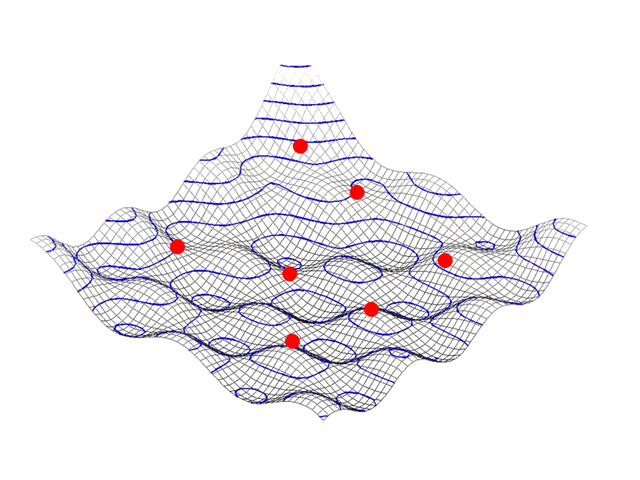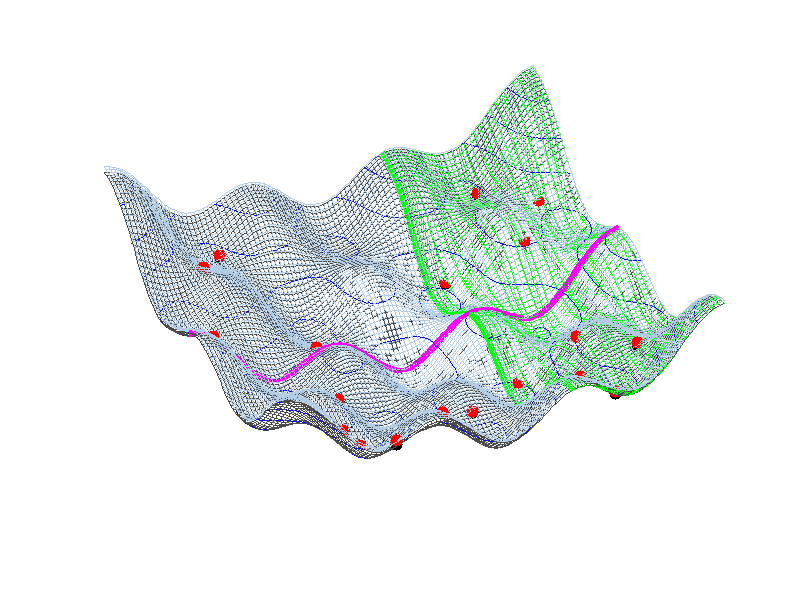 |
|
||||||||||||||||||||||||||||||||||
|
|||||||||||||||||||||||||||||||||||
Project Description
Gradient based optimization methods are widely used in mechanical system optimization.
These methods have favorable convergence properties and thus are computationally very efficient.
However, these methods cannot be applied to optimization problems that are non-differentiable, multimodal with little knowledge about the initial design. In this case, stochastic methods can be used, because they do not require any gradient information and they even have the possibility to find the global solution.
Well known methods are the Simulated Annealing Method, the Evolutionary Strategy and the Genetic Algorithms.
In 1995, the the Particle Swarm Optimizer has been introduced and added to this family of optimization methods.
This approach is based on the simulation of the social behavior of bird flocks or fish schools.
A powerful method could be developed by combining the Particle Swarm approach with the Augmented Lagrangian Multiplier method. This ALPSO algorithm identifies automatically the active set of constraints and does not require a feasible initial design. The Augmented Lagrangian Multiplier Method maps the objective function and the constraints to a pseudo objective function by applying an appropriate penalty approach. Unlike classical penalty methods, this approach is insensitive to penalty factors. The pseudo objective function is iteratively updated and sequentially solved by the Particle Swarm Optimizer (animation). The double iterative characteristic and computational overhead is removed by limiting the inner optimization process to only a few iterations. The structure of the algorithm is well suited for using parallel computer architecture in order to further reduce the computational burden associated with stochastic optimization methods. Finally we have implemented ALPSO into our optimization software package AIMS in order to do further investigation and testing.
|
| Last modified
17.1.2023 ( |

